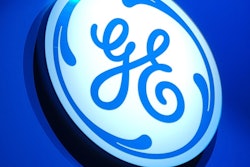
The unthinkable has finally happened. Industrial conglomerate GE announced today that it will be spinning off its GE Healthcare unit as a separate company as it struggles to deal with a cash crunch.
GE made the announcement early on Tuesday, stating that GE Healthcare would become a standalone company as the remainder of GE would focus on its aviation, power, and renewable energy businesses. GE is also planning to fully separate its Baker Hughes industrial services business.
The news came as a shock throughout the radiology business, where an adage among purchasing managers once claimed "You'll never get fired for buying GE" -- a testament to the company's reputation and staying power. While GE had been struggling with a cash crunch since 2017, the company's CEO John Flannery had said that healthcare would remain a key part of GE's operations going forward.
In announcing the move, Flannery said that GE Healthcare and Baker Hughes are excellent examples of GE at its best -- "anticipating customer needs, breaking barriers through innovation, and delivering life-changing products and services.
"Today's actions unlock both a pure-play healthcare company and a tier-one oil and gas servicing and equipment player," he said in a prepared statement. "We are confident that positioning GE Healthcare and [Baker Hughes] outside of GE’s current structure is best not only for GE and its owners, but also for these businesses, which will strengthen their market-leading positions and enhance their ability to invest for the future, while carrying the spirit of GE forward."
Deep roots
GE's roots date back to the 19th century, when a pair of inventors -- C.F. Samms and J.B. Wantz -- founded the Victor Electric Company in Chicago in 1893. They began making x-ray systems one year after Wilhelm Röntgen's discovery of x-rays in 1895.
A series of acquisitions and mergers followed over the next 25 years, until in 1920 when Victor Electric was acquired by GE, a manufacturer of x-ray tubes. The company grew rapidly over the coming decades, and after World War II moved its headquarters and manufacturing to the Milwaukee area.
Additional corporate milestones occurred in 1985 when GE bought Technicare from Johnson & Johnson, acquiring Technicare's large installed base of CT scanners; it bought ultrasound developer Diasonics Vingmed in 1998 and CT manufacturer Imatron in 2001. A major acquisition occurred in 2003 with a $9.5 billion purchase of U.K. life sciences and contrast media company Amersham, a move that brought GE into the pharmaceutical business.
GE Healthcare also accomplished a number of medical imaging product milestones over the years. The company was one of the first manufacturers of CT scanners, installing its first system in 1976. In the early 1980s, it launched its Signa line of MRI scanners, which went on to become one of the best-known product brands in radiology.
Cash struggles
Despite its storied lineage, GE Healthcare got caught in the downdraft created when its parent company in 2017 announced a massive one-time charge to write off liabilities related to a long-term care insurance business that it has sold off. The cash crunch called into question the wisdom of GE's corporate structure as a large, diversified firm with multiple varied businesses. The cash woes and associated stock slump led to GE being removed from the Dow Jones Industrial Average earlier this month.
The company began jettisoning smaller units to raise cash, and speculation was that the healthcare division would be one of them. But Flannery's assurance that healthcare was a core business prompted many industry observers to believe that medical would remain within GE's fold.
Ironically, GE Healthcare has been one of the stronger performers in GE's corporate portfolio. The division posted 2017 revenues of $19.1 billion, up 5% compared with $18.3 billion in 2016. The business also grew its profit by 9% to $3.44 billion last year, compared with $3.16 billion in 2016.
And GE isn't alone when it comes to radiology giants making sweeping changes -- within just the last year. Siemens spun off its Siemens Healthineers unit as an independent company earlier this year, and Toshiba Medical Systems was sold to Canon in late 2016. Meanwhile, the other company rounding out the Big Four in radiology -- Royal Philips Electronics -- has essentially become a pure-play healthcare firm centered around its Philips Healthcare division by selling off any businesses that aren't related to medical.
Indeed, GE's move could prove beneficial by freeing the healthcare division from the constraints of a corporate parent and giving it more independence -- a rationale cited by Siemens for its spinoff of Siemens Healthineers into a separate company. The independent company will continue to be called GE Healthcare, according to a corporate spokesperson.
The independent company will continue to be led by Kieran Murphy, current president and CEO of GE Healthcare.
"GE Healthcare’s vision is to drive more individualized, precise, and effective patient outcomes," he said. "As an independent global healthcare business, we will have greater flexibility to pursue future growth opportunities, react quickly to changes in the industry and invest in innovation."
GE expects to generate cash by selling about 20% of its stake in GE Healthcare and to distribute the remaining 80% to GE shareholders through a tax-free distribution. The spinoff is expected to be completed over the next 12 to 18 months.




















